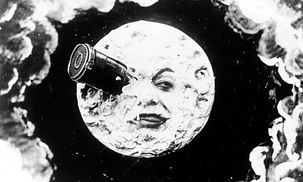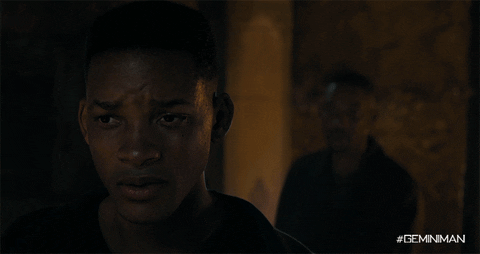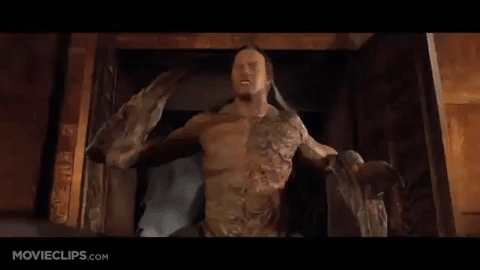Introduction



.jpg)
Core FX films
American Werewolf in London was a 1981 Horror/ Comedy directed by John Landis famed for its gruesome uses of practical effects and the visseral reactions they got from the audience.




The Pirates of the Carribean Curse of the Black Pearl Directed by Gore Verbinski was a 2003 smash hit bringing the theme park ride to life with its action-packed sequences. none of which could have been possible without the groundbreaking effects of display.
The Lord of the Rings was a brand-new kind of filmmaking. Utilizing the very best in practical and digital production its impact on cinema is still felt today with Gollem breaking ground in mocap and directly inspiring Avatar.
James Cameran's the Abyss (1989) was the first feature film to use a physics-based water simulation.
Ray Harryhausen's creature work for his entire catalogue of films will forever live in infamy. The entire skeleton sequence from Jason and the Argonaughts is an icon in film history. He is forever referenced and shaped the way creatures are approached in the medium of film.
Trip to the moon is the original visual effects film. George Melies was a stage magician and brought that same technique of wizardry to the short films he worked on. The principles he developed stand as principle to all VFX.





King Kong is perhaps the most iconic effect of all time. directed by Merian C. Cooper and Ernest B. Schoedsack the stop motion techniques used were an ahead of their time in 1939
PIXAR are responsible for the first feature film entirely 3D animated; they are the most successful 3d animation house of all time and continue to develop and hone their craft to this day. Luxo Jr (1986) was their first smash hit and remains their mascot.
Tron's light cycle sequence was a unique cinema experience in 1982. Each frame was mathematically rendered, and it took months to create those 3 minutes.
Through the Looking Glass Philosophical Toys and Digital Visual Effects
Steven Prince, the author, explores the relationship between art and science and explains the strength of the connection specifically within the medium film. First, he in detail explains the development of moving images and how modern cinema can be traced all the way back to the phenakistoscope and it's invention in the 1930s. this relationship between art and science to him are mirrored by falsity and realism, combining to what he calls a perceptual realism. The image you see may not be real or even bound by laws of physics but there's is a sequential logic to it which under pins your acceptance of the image.

After touring the progress of moving pictures Prince focuses on the use Visual effects in two David Fincher Properties, 'The Curious Case of Benjamin Button' and, 'Zodiac.' Each their own example of perceptual realism, Prince describes how we are shown a historic incarnation of San Francisco in Zodiac that could not be captured today. Multiple full CGI establishing shots, one specific being the representation of the Port Authorities building, were constructed using photos of the original sites which were put through a process called photogrammetry. An ordeal which utilizes the multiple angles and perspectives to not only retrieve geometric but also lighting information in quite some detail. Benjamin Button was able to appear as if he was aging backwards by entirely replacing the heads of multiple different actors of varying ages, with that of Brad Pitt altered to match the bodies he was placed on.
These new digital creations added to film are often jeered as diminutive additions that are ruining the craft. Prince seemed to simply point out that, far from diminish the art, these practices serve to reunite this maturing art with the science that has always been so ingrained into its fibers.
Spectacle v. Narrative



“Computer generated effects are often blamed for bad Hollywood movies” However visual effects can often be a useful tool for enhancing storytelling with sound, colour and “experimental camera angles” (Mcclean, 2007)
Visual effects and the spectacular hold a strange position in cinema. Often the sequences of spectacle in film are an interruption of story. Plot is put on hold in exchange for an awesome feast of visual imagery and stunts.
This idea has been the foundation of the Scorsese approach to modern Hollywood blockbusters and more specifically the superhero movie. Martin Scorsese sees the genre as comparable to a theme park ride; the audience simply watches the thrill and fast action, but it has no substance, and they leave unchanged.
His exact words were, “Honestly, the closest I can think of them, as well made as they are, with actors doing the best they can under the circumstances, is theme parks. It isn’t the cinema of human beings trying to convey emotional, psychological experiences to another human being.”
Personally, I think, like most things, it's the use of the tool which determines its effectiveness. Spectacle isn't the enemy of story, movies like avatar and titanic are built on the wonder of the settings in which they take place. If you remove the spectacular ending of Titanic the story doesn't work, and extent of the sequence imbues greater stakes and gravitas into the romantic core of the film.

Digital Visual Effects in Cinema : The Seduction of Reality
Steven Prince again the author, this time studies the uses of hidden effects and the misnomer that visual effects only correspond to blockbusters. All manner of narrative films has adopted the use of digital visual effects, he references again to Zodiac and Benjamin Button. He also seems to mark a line wherein visual effects have been associated to style. Films appearing raw and focused on character performance boast their lack of effects however once a film adopts a more stylistic approach, the effects creep in. finally he also takes it upon himself to define the border between special and visual effects. Special is indicative of a departure from the norm and during the era special effects the seams were visible and invasive. That isn't true of visual effects. Not only have composites become seamless but even before postproduction, motion capture has broken the barrier between performance and visual effects. Movies such as the 'Planet of the Apes' reboots have brought iconic performances from talented actors into the digital domain. The book focuses on the time between Star Trek: Wrath of Karn and now. The focus of digital effects is justified by his defined terms of special and visual effects. In the digital age every plate is subject to scrutiny and manipulation before it is layered together and so the dichotomy of Lumiere and Melies, to which he repeatedly harks, has been crumbled to one form: Cinema.



History and Context

The Arrival of a Train at La Ciotat Station (1895) was one of the first short pieces of film to be shown to audiences in cinema. It's reported that audiences were so impressed that they backed away from the screen to avoid the oncoming train. The legitimacy of that story aside; it's clear that audiences were astonished and that the Lumiere brothers were on track to a slew of successful filmmaking.
The peculiarity is that the Lumiere's couldn't see the coming potential of film as a medium. They saw film as a method of recording what was real and laid there focus on a style closer to documentary, making 'actualities'.
George Méliès was a French illusionist, actor, and film director. He led many developments in the earliest days of cinema especially in the realm of visual effects. He used many advanced techniques (e.g., multiple exposures) and popularized their use in filmmaking.

The Cinema of Attractions: Early Film, Its Spectator and the Avant-Garde

Yet another article posing spectacle as the enemy of narrative. Tom gunning sees a great disparity between the state of cinema pre-1906 and all that came after. His point begins as an attempt to bring focus to a heterogeneity between what he terms the 'cinema of attractions' as coined by Mikhailovich Eisenstein and the narrative form that succeeded it. unusually he seems to favor the spectacle as the true well of potential for the medium. Its unclear what he means by this however as he disregards the modern spectacle of visual effects movies and the Spielberg Lucas coppola as a tame version of attraction and exhibitive cinema.
Although initial defined at the top of the article, Gunning seems to contradict or perhaps reconsider his own point as he writes. after making his argument he talks of the irrefutable relationship between spectacular and narrative film and uses the 1903 Great Train Robbery as an example of how narrative was already creeping into attraction and Ben Hur's marketing as an example of how attraction sells narrative
Harryhaussen
Ray Harryhausen
Ray Harryhausen was perhaps one of the most influential visual effects artists of the 20th century. Using articulated models which he had sculpted in his home garage, Harryhausen pioneered the development of dynamation (the combination of stop-motion model work and live-action plates photography). From Mighty Joe to Clash of The Titans, Harryhausen created 15 films over the span of 32 years.
His models were metal armatures surrounded by latex and rubber facades of character. His reputation emerged because unlike any other VFX technician, he was a true auteur. He would have input on the development of projects from start to finish. He would direct some live-action scenes and then act as soul animator for almost all his projects.
With an undeniable impact on film history, his work and iconography are often referenced and paid homage to this day, even being the first monster to take the golden gate bridge.



What is Digital Cinema
The article posits that digital cinema is essentially the death of live-action. where post-production was the afterthought before, plate photography has (or is destined to become) an inconvienient preproduction.
Where this article stands out is that it interprets this as a return to art rather than a departure. The camera is automatic and unimpressive however digital post-production requires a detailed analysis of every single frame. Harking back to zoetropes as now once again every frame is painted. It goes on to describe an eventuality where live-action photography becomes unnecessary as we learn to create images that appear completely real but are entirely constructed on a computer.
Its also seems to imply a death of authenticity. The birth of cinema as a medium was empowered by its unique sense of authenticity and reality along with its power to document with irrefutable credibility. the mutability of footage has destroy the integrity of the medium.

The Advent of the Computer Generated Image





Star Trek II - The Gensis Demo
This fascinating article by Alvy Ray smith is a documentation of the creation of some of the earliest uses of geometric CGI in commercial film. a sequence in the 'Wrath of Kahn' depicting a simulated terraformation of a planet using the infamous genesis device. The article not only gives insight into the process of creation for this project but also impresses the environment and culture of revolution in those, the earliest, days of ILM. Each individual to a different instrument the team come together like a band to invent the bold new images that would take over cinema in the following 20 years.
It's was inspiring to hear the passion that was so clearly present among the team. A brand new form of fire simulation created by bill reeves who had previously never shown any professional interest in colored or raster graphics. He was assigned to that sector of imagery but his own investment in the new software revealed the awesome spectacle of this burning fury resulting in a rethink and redesign of how the genesis device appeared.
The article is a true window into the culture of the beginnings of a company that would revolutionize modern cinema.

Uncanny Valley



The uncanny valley is a phenomenon encountered when human likeness is attempted artificially. Majoritatively found in robotics and animation, as we approach human likeness there is a dip in the affinity an audience can feel for a character. This stems from imperfections that reveal an uneasy deception or a lack of life behind the eyes.
Its unclear quite why this aversion occurs however there is a remarkable and distinct indifference an audience feels for a character that only just falls short of the mark for reality.
Its my opinion that we have only truly surpassed the valley a couple of time in conventional consumer cinema. Bladerunner 2049's ressurection of Racheal along with a full CG creation of Hugh Jackman in 2017's LOGAN


The Uncanny Valley
Masahiro Mori maps out the uncanny valley ion his article first through design then movement. After which he goes on to make a case to almost abandon the crusade for realism in design. Specifically with robotics and prosthetics he feels that it would be more affable to create a deliberately unhuman designs similar to that of the articulated wooden carvings of Buddhist statues. He feels its far more attainable and perhaps fashionable to aim for what he terms 'the first peak' referencing his asymptotive graph which is made abnormal by it's dip in the late stage of the curve.
He goes on to make a case for a relationship between the way movement amplifies the steepness of the graph and an instinctive distain for proximal sources of danger. relating the route of the valley to our need to avoid corpses and dangerous creatures.
Although most of the article is simply an explanation of what is widely regarded as fact, I tend to agree with the points he does make and within visual effects I see that characters such as Thanos or Gollem find far more success when they aim for the 'first peak'.
Principles of Animation
According to Disney there are 12 principles of animation. These are rules of achieving believable motion in hand drawn animation. The rules created for sketch frame animation can be almost directly translated for three dimensional CGI animation techniques.

Compositing
Compositing is the art of combining multiple plates to create a cohesive image.
Often used for extending a set; to cover a setting or to add something entirely new into the scene.
I took a look at DNEG's breakdown of 'The King' majority filmed in the modern day fields of england DNEG replaced huge segments of the terrain to appear as 14th century france.
I took particular notice of the attention to lighting and shadows which ties the new armies to the ones filmed on set.



